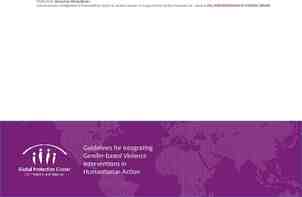Chapter Two The Cultural Environments Facing Business 2004
33 Slides815.50 KB

Chapter Two The Cultural Environments Facing Business 2004 Prentice Hall, Inc 2-1 International Business 10e Daniels/Radebaugh/Sullivan International Business

Chapter Objectives Understand cultural environments Explain major causes of cultural difference and change Examine behavioral factors influencing countries business practices Examine cultural guidelines for companies that operate internationally 2-2

Introduction Culture represents the specified learned norms of a society, based on attitudes, values, and beliefs. Major problems of cultural collision may occur because: A firm implements practices that do not reflect local customs and values; Its employees are unable to accept or adjust to foreign behaviour.

Major Cultural Issues Problems arise in international business when: Employees have subconscious reactions Employees assume all societal groups are similar A company implements practices of work less well than intended Employees encounter distress because of an inability to accept or adjust to foreign cultural behaviors Companies/employees are insensitive to foreign consumer preferences 2-3

Cultural Awareness Firms must develop awareness about those cultures in which they operate. The amount of effort needed to do this depends on the similarities between or among countries, and the type of business operations undertaken .

Identification and Dynamics of Cultures The Nation as a Point of Reference

Cultural Formation and Dynamics Cultural values may change through : - Change by Choice: takes place as a reaction to social and economic changes that present new alternatives. - Change by Imposition ( Cultural imperialism): occurs when countries introduce their legal systems into their colonies by prohibiting established practices and defining them as criminal. - The introduction of some, but not all, elements of an outside culture often is called creolization, indigenization, or cultural diffusion. - Contact with other cultures

Cultural Factors at Play Cultural awareness Apparel Religion Language Identification and dynamics of cultures Behavior practices affecting business Timeliness Ethics Strategies for dealing with cultural differences Education Research 2-4

Identification of Cultures Cultures are derived with people with shared attitudes, values, and beliefs People also belong to national, ethnic, professional, and organizational cultures Points of reference: National Geographic Language Religion International business often changes cultures 2-5

World Output by Language Group LANGUAGE English Mandarin Spanish German French Arabic Hindi Other % OF WORLD OUTPUT 33% 10% 7% 7% 5% 3% 2% 33% 2-6

Major Religions of the World RELIGION Christian Muslim Hindu Chinese folk Buddhist Sikh Judaic NUMBER OF ADHERENTS (in millions) 2,000,000 1,188,000 811,000 384,000 360,000 23 14 2-7

Behavioral Practices Affecting Business Social Stratification Systems Individuals status with the culture Managerial groups may be highly valued Employees may be valued less Ascribed (qualified) group memberships Gender, family, age, class, and ethnic, racial or national origin Acquired (obtain) group memberships Religion, political affiliations, and professional and other associations 2-8

United States “Values” COMPETENCE! Intolerance for discrimination based upon: Gender Race Age Religion Although equality is not applied perfectly, in many other cultures, this competence is of secondary importance Since our values may seem radical to foreigners it is of extreme importance that international businesses spend the resources to determine what foreign cultures they can ethically and effectively conduct business in 2-9

Characteristic-Based Groups Gender-based groups China India Afghanistan Age-based groups (United States) Family-based groups Occupation (United Kingdom) 2-10

Motivation Cultural difference in: Work ethic Greediness Leisure - Protestant work ethic Expectation of success and reward Perceived likelihood of success and reward is an important factor, which motivates a person’s behaviour toward working. In general, People have little enthusiasm: enthusiasm - For efforts that seem too easy or too difficult; - Where the probability of success or failure seems almost certain. 2-11

The highest degrees of enthusiasm occur when the uncertainty (success is uncertain) is high. In general, people will usually work harder at any task when the reward for success is high compared with that of failure. In cultures where the probability of economic failure is almost certain and the perceived rewards of success are low, there is a tendency to view work as necessary but unsatisfying. The greatest enthusiasm for work exists where high uncertainty of success is combined with the likelihood of a very positive reward for success and little or none for failure. Need Hierarchy

Relationship Preferences Power distance: relationship between superiors and subordinates Individualism vs. collectivism United States is clearly different from Japan China is clearly different from Mexico Risk-taking behavior Uncertainty avoidance Trust Future orientation Fatalism 2-12

Power Distance When power distance is high: the management style is usually distant (autocratic or paternalistic). When power distance is low: managers tend to interact with and consult their subordinates. Individualism vs. Collectivism Individualism: A person’s desire for personal freedom, time and challenge. Low dependence on the organization Self-actualization.

Collectivism Collectivism: A person’s dependence on and allegiance to the organization. Focus on physical and emotional needs.

Differences in Information and Task Processing 1. 2. We perceive, obtain, and process information differently. We also reach conclusions differently. Perception of cues Obtaining information 3. Low-context cultures (United States) Information Processing Sequentially or simultaneously Focused or broad Handling principles or small issues first 2-13

Perception of Cues People perceive signals selectively . People identify what things are through their senses. Obtaining information Low-Context Cultures: Most people consider firsthand information to be the only information relevant to the decision to be made. High-Context Cultures: Most people believe that minor information is valuable to decision making and conclude meanings from things said indirectly.

Information Processing Monochronic Cultures: People prefer to work sequentially. Polychronic Cultures: People prefer to work simultaneously on all tasks faced. Some cultures tend to focus first on the whole and then on the parts. Others focus first on the parts and then on the whole. Idealism: When people determine principles before they try to resolve small issues. Pragmatism: People focus on more on details rather than principles.

Communication Problems - - - - - Spoken and Written Language Be sensitive to accurate translations Some words do not have a direct translation. Languages and the common meaning of words are constantly changing. Words may mean different things in different contexts. Misusing words may change the meaning significantly. Rules for choosing translators.

Language Strategies Get references for translators Ensure the translator is familiar with technical vocabulary for the business Do a back translation Use simple words Avoid slang Repeat words and ask questions Expect the extra time communication will take 2-16

Language Groups 2-17

Silent Language Be tolerant of differing perceptions of time Understand the message sent by body language 2-14

Accommodation to Foreigners - - Advantages of adjusting to the host country culture. International companies have sometimes succeeded in introducing new products, technologies,and operating procedures to foreign cultures with little adjustment. Introductions did not significantly contradict deepseated values. The host society may be willing to accept foreign customs as a trade-off for other advantages.

Cultural Distance and Similarity When doing business in a similar culture, companies: Usually have to make fewer adjustments. May overlook subtle differences. Culture Shock Some people get frustrated when entering a different culture. Even when differences are not significant, culture shock can happen: the frustration that results when having to learn and cope with a vast array of new cultural values and expectations. Reverse Culture Shock: when some people encounter culture shock when they return to their home countries because they have learned to accept what they have encountered abroad.

Cultural Orientations International businesses adopt an attitude towards foreign cultures Polycentrism: control is decentralized so regional managers can conduct business in a local manner. Disadvantages: A company that is too polycentric may avoid transferring home-country practices or resources that actually may work well abroad. To compete effectively with local companies, an international company must perform certain functions in a distinct way. Excessive polycentrism may lead to extensive imitation of host-country practices, which may lead to losing innovative superiority. 2-18

Ethnocentrism: belief that one’s own culture is superior and ignores important factors Geocentrism: a hybrid of polycentrism and ethnocentrism, the middle ground Companies MUST evaluate their practices to ensure they account for national cultural norms

Cultural Influences 2-15

Hierarchy Comparisons 2-19

Chapter Review Understand cultural environments Explain major causes of cultural difference and change Examine behavioral factors influencing countries business practices Examine cultural guidelines for companies that operate internationally 2-20






